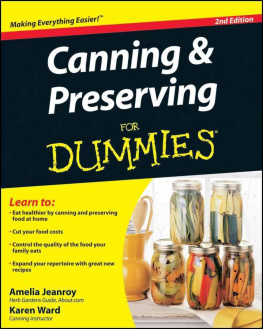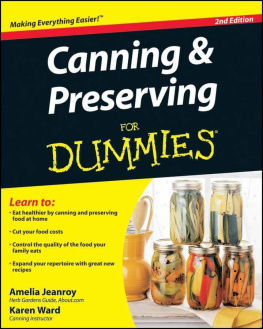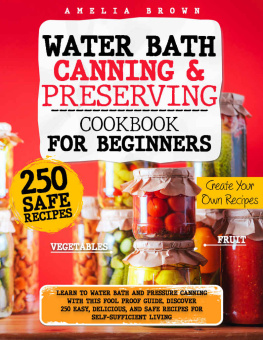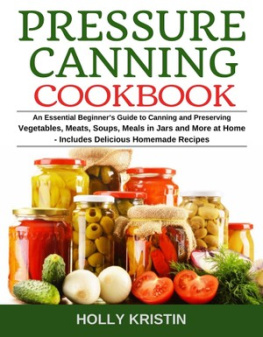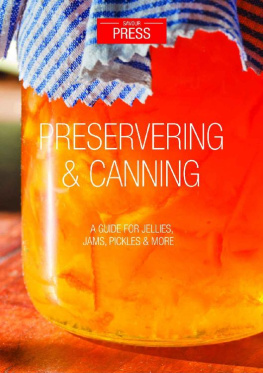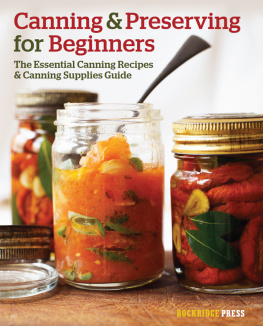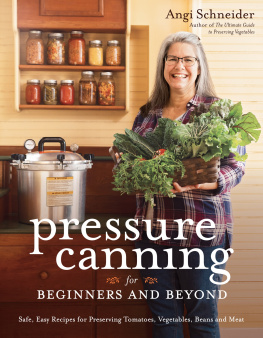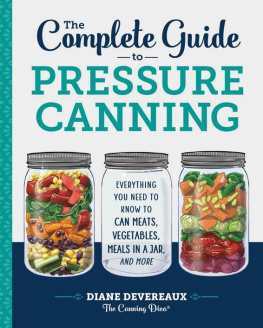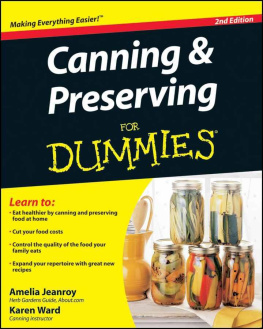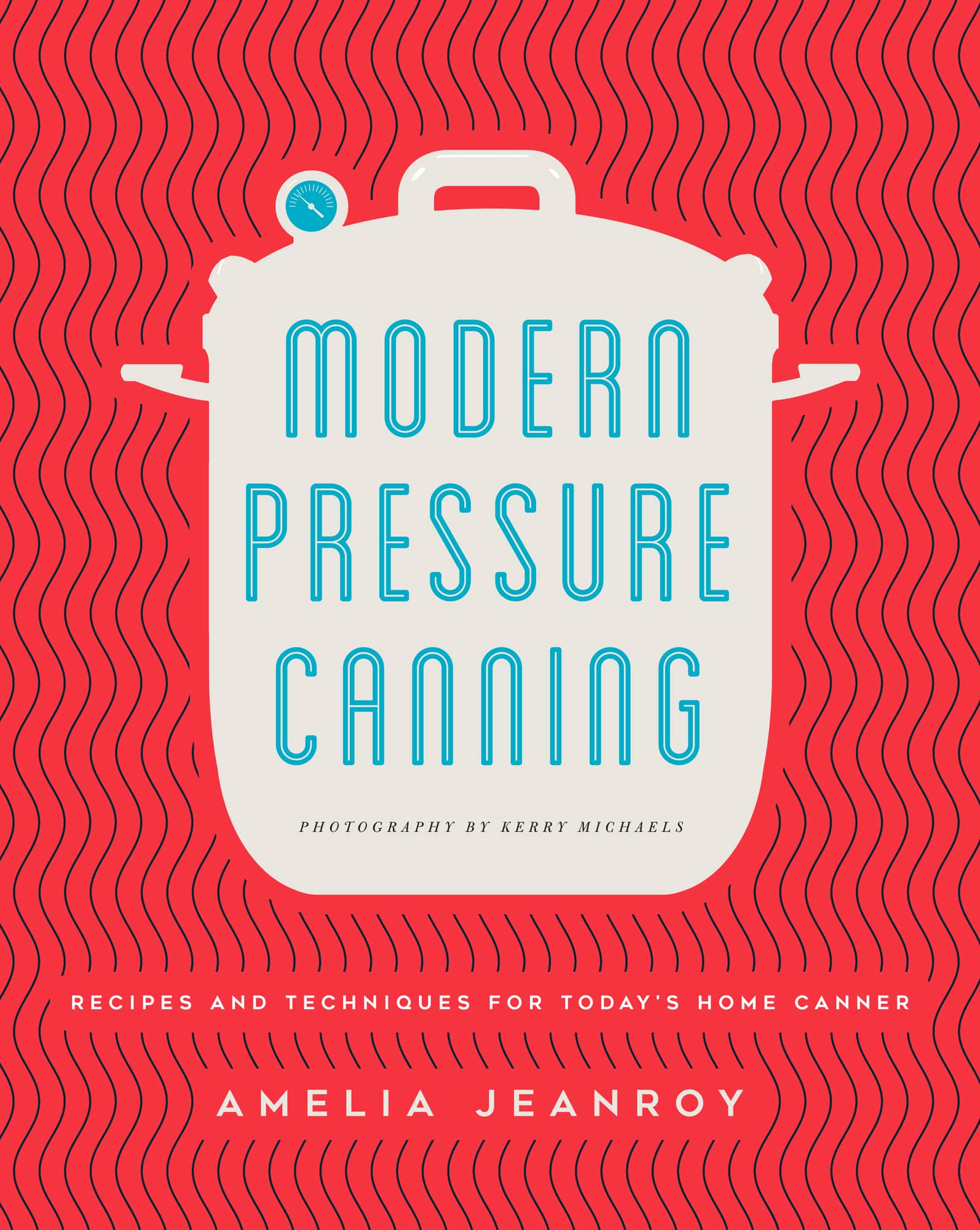The glass clinks gently in the hot, soapy water as I wash my jars for this years canning. Sitting on the counter are colanders full of tomatoes and peppers that need to be saved for the winter. Although canning involves plenty of work, its something I look forward to every year. Just like cooking dinner, the work is rewarding because of the taste: theres nothing better than opening a jar full of flavor in the middle of winter.
The jump from canning to pressure canning comes at a different point for different people. I decided to take the plunge into pressure canning as my skills grew in the garden. My family was living on a mountain in Montana and most of my entertainment came from growing vegetables and fruit. Although I started canning jams and jellies, it became obvious I needed to be able to preserve much moreand that required pressure canning.
I enjoy teaching people the ins and outs of pressure canning. Its so much fun to walk to the garden with new canners and load up a basket with fruits and veggies. After a couple of hours prepping and canning, we all go home with jars of beautiful preserved food. Its a lesson those new to canning wont soon forget. And its exciting to share not only a hobby, but a way of life: home cooking from your own pantry. Welcome to Modern Pressure Canning.
WHAT IS THE DIFFERENCE BETWEEN PRESSURE CANNING AND WATER BATH CANNING?
Pressure canning and water bath canning are similar in that they are both ways to preserve food in your own kitchen. The general process of putting food in jars, attaching lids, heating to seal, and storing are the same. However, there are some major differences you should know.
All foods have natural acidity levels. Many fruits and tomatoes are highly acidic. These foods can be water bath canned. Or, take pickles: cucumbers (a low-acid food) in an acidic pickling solution. These can also be water bath canned.
Water bath canning, or hot water canning as its sometimes called, is the method of submerging filled jars into hot water and boiling for a specific period of time. This means the internal temperature of the food in the jars is heated to 212F. Its a great way to start canning, and the most common way to make popular pantry items such as jams, jellies, and pickles. However, to get a wider range of foods in jars, you need to learn the art of pressure canning, which is what this book covers.
Pressure canning is the preserving method by which filled jars are placed into a large pot with just a few inches of water in it. A locking lid is placed on the pot and steam develops inside the pot. The jars contents reach an internal temperature of 240F under a specific pressure (in pounds, see ), and the recipe states a specific period of time to hold that pressure. Pressure canning can be used for a wider variety of foods. You can process vegetables and fruits with low or high acidity, meats, poultry, fish, sauces, and even whole recipessuch as soups or stews. Pressure canning generally means less mess, and my jars always seem to seal when I pressure can. (I also admit some biasI love canning meat. On the farm, we raise much of our own meat, and being able to process it myself means I can fill my pantry with healthy food that has been raised ethically.)
Pressure canning, as you might expect, is done in a pressure canner. A pressure canner is a large pot designed specifically for the canning process; do not confuse a pressure canner with a pressure cooker. A pressure cooker is very useful, but its a different piece of equipment meant for general cooking. Although there is some crossover, and electric pressure cookers can be used to can a couple of jars at a time, they are two distinctly different kitchen items with similar names.
Well soon dive into more detail on all of this and theres much more to learn in the chapters that followand of course, there are plenty of recipes! From everyday staples like tomato sauce and green beans to creative canned creations like pineapple-flavored zucchini and Mexican-style chicken soup, I hope this book not only gives you the confidence to can, but gets you excited about it as well!
Water bath canning and pressure canning are the only two approved methods for canning that exist today. You may have heard of some old-fashioned ways, like canning using the oven or dishwasheror using aspirin. However, these alternative methods have passed out of favor with time for a reason: they are not reliably safe!
CHAPTER ONE
PRESSURE CANNING BASICS

HAVE YOU EVER WONDERED WHY PRESSURE CANNING WORKS? Its actually a simple concept, and, if you are a bit of a science geek like me, quite fascinating!
The goal of pressure canning is to expose food to a high temperature under a specific pressure for a specific period of time to destroy microorganisms that are harmful if eaten. Pressure canning allows food to be heated to 240Fthe temperature necessary to destroy these microorganisms, including the botulism bacteria.
Botulism is rightfully one of the biggest fears for those new to canning, or those who dont can. It is flavorless and odorless. Even worse, it cannot be destroyed by boiling or hot water bath canning, which only reaches 212F regardless of how long you boil the food. Botulism thrives in low-acid foods, in moist environments, and in an anaerobic (no oxygen) environment. All these conditions are present inside an improperly processed jar of food. Luckily, proper pressure canning creates a higher-temperature environment and can eliminate the risk of botulism in hours.
The other big fear when it comes to pressure canning is the safety of the pressure canner itself. Through the rest of this chapter, well discuss pressure canners, common terms, essential equipment, and using the pressure canner for the first time. By the end of this chapter, your fear should be a thing of the past, replaced by excitement to try your first recipe!
COMMONSENSE PRESSURE CANNING


